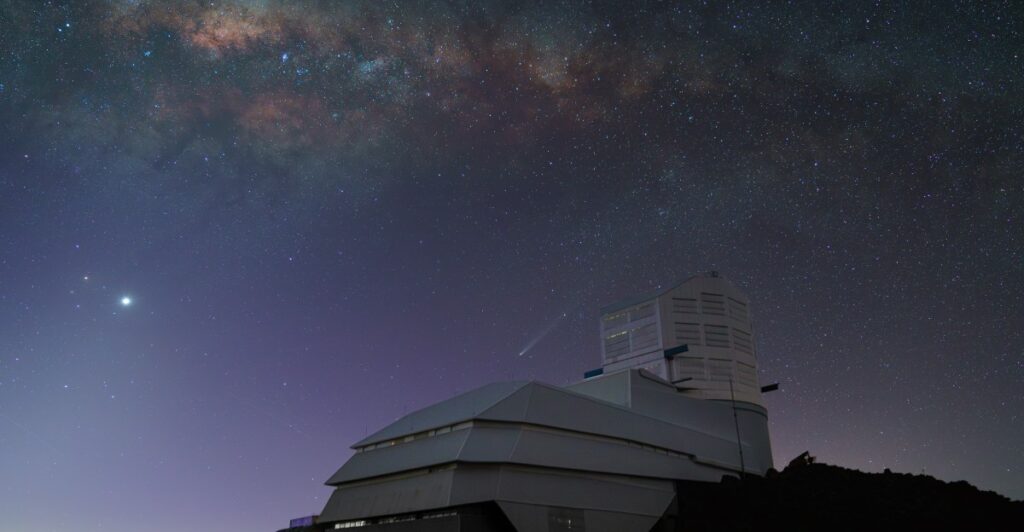
The Vera C. Rubin Observatory has released its first light images, revealing an astonishing view of the universe with approximately 10 million galaxies captured in a single frame. This breathtaking image, unveiled on Cerro Pachón in the Chilean Andes, marks a significant milestone in astronomical observation, promising to reshape our understanding of the cosmos.
Perched at an altitude of 8,660 feet, the observatory benefits from the crystal-clear night skies of the Andes, providing an unparalleled window into space. The observatory, named after the pioneering astronomer Vera Rubin, was constructed with funding from the US National Science Foundation (NSF) and the US Department of Energy. It aims to conduct the ambitious 10-year Legacy Survey of Space and Time, capturing the entire Southern Hemisphere sky every few nights.
A Marvel of Modern Astronomy
At the heart of the Rubin Observatory is its extraordinary optical system. The observatory features a 27-foot-wide dual mirror crafted from 51,900 pounds of molten glass, designed to be both massive and agile, allowing it to scan the sky swiftly. This mirror channels light to the 3.2-gigapixel LSST Camera, the largest digital camera ever built, capable of capturing a portion of the night sky equivalent to 45 full moons every 30 seconds.
The first image from Rubin, dubbed the “Cosmic Treasure Chest,” is a composite of 1,185 exposures of the Virgo Cluster, our nearest major galaxy cluster located 55 million light-years away. This image is not just a visual marvel but a scientific tool that will help unravel the mysteries of dark matter, dark energy, and the formation of the Milky Way.
Revolutionizing Space Science
The Rubin Observatory is set to transform our approach to space science. According to the NSF, Rubin will collect more optical data in its first year than all previous ground-based telescopes combined. This data will turn the dynamic and ever-changing sky into a searchable movie, offering unprecedented insights into cosmic phenomena.
In its initial 10 hours of operation, Rubin’s detection software identified 2,104 new asteroids, including seven near-Earth objects (NEOs) that could potentially pose a threat to our planet. This achievement underscores Rubin’s role in planetary defense, helping NASA meet its goal of identifying 90 percent of the estimated 25,000 NEOs over 140 meters in size.
“It took 225 years of astronomical observations to detect the first 1.5 million asteroids,” Jake Kurlander, a graduate student astronomer at the University of Washington, told Earth.com. “Rubin will double that number in less than a year.”
Global Access to the Cosmos
The images captured by the Rubin Observatory will be accessible to the public through its Skyviewer app, allowing anyone to explore the universe from their own devices. This democratization of data provides a unique opportunity for enthusiasts and scientists alike to engage with celestial discoveries.
The observatory’s ability to capture and share these images offers a new perspective on our place in the universe. As we navigate challenges on Earth, Rubin’s first light serves as a reminder of the vastness and beauty of the cosmos.
A Perspective Beyond Our World
Reflecting on the significance of Rubin’s images, one cannot help but recall Walt Whitman’s words from “When I Heard the Learn’d Astronomer,” evoking a sense of wonder and humility in the face of the universe’s grandeur.
As we gaze at the stars through Rubin’s lens, we are reminded of our small yet significant place in the cosmic tapestry. The Vera C. Rubin Observatory’s first light is not only a triumph of scientific engineering but also a beacon of inspiration, inviting us to explore and appreciate the universe beyond our immediate surroundings.






